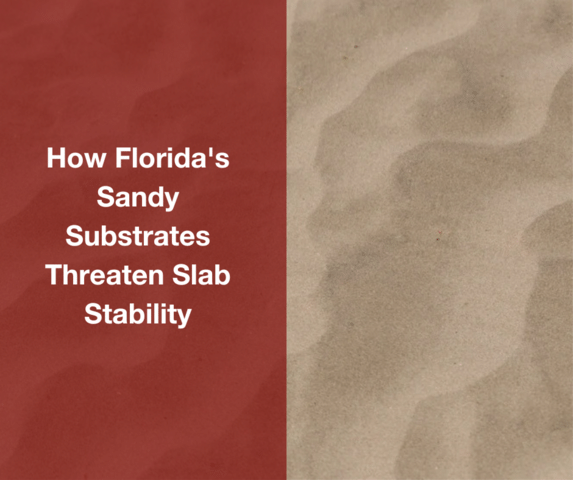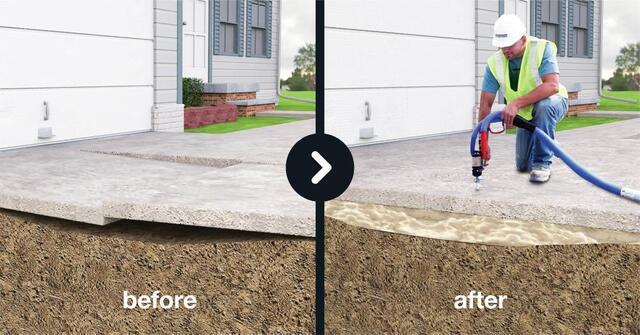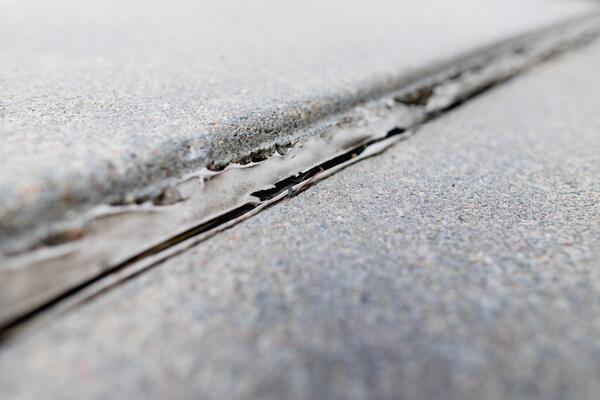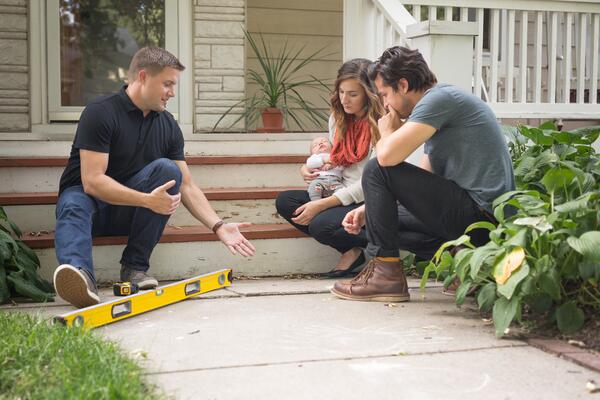How Florida's Sandy Soils Threaten Slab Stability

Florida’s hallmark sandy soils—loose, highly permeable, and prone to shifting—pose serious threats to concrete slab integrity. Heavy rain washes fine sand beneath driveways, patios, and garage slabs, creating voids that lead to cracks, settling, and separation from adjacent structures. This erosion-heavy scenario is especially common across Central Florida, where slab instability can compromise both safety and curb appeal. Early detection, professional assessments, and the proper remediation solutions are essential for safeguarding the lifespan of your concrete or foundation.
Finding Problems Early: Soil Probes and Acoustic Void Detectors
At LRE Foundation Repair, we use advanced tools to spot hidden problems during concrete inspections—so there’s no guessing involved. Choosing the right contractor matters. Make sure they use proper tools and technology to check for issues. One important method is edge soil probing, where we use steel rods to feel for soft or loose soil around the edges of concrete. These weak spots often signal that a slab may start sinking. We also use high-tech equipment like acoustic void detectors and ground-penetrating radar to find empty spaces under the slab—long before cracks or settling appear. These tools help us catch problems early and fix them right.
PolyLevel Injection: A Precise Way to Lift Concrete
After we find hidden gaps under concrete, one of the best ways to fix the problem is with PolyLevel—a special high-density foam that lifts and supports the slab.
Here’s how it works: Small holes are drilled in key spots, and the foam is injected underneath. It quickly expands—15 to 20 times its original size—filling voids and lifting the concrete back into place. The foam hardens in about 30 minutes, creating strong support and sealing out water. Unlike old-school methods like mudjacking, PolyLevel is lightweight, so it won’t put extra stress on Florida’s soft, sandy soil. It’s a fast, clean, and precise way to fix sunken concrete.

Structural Reinforcement: Piers and Chemical Grouting Options
In cases of deeper soil instability or foundation movement, LRE reinforces foam injection with robust structural underpinning solutions—such as helical piers, push piers, or chemical grouting. Each of these methods anchors into deep, load-bearing strata, delivering strength where superficial measures might fall short.
- Helical piers are steel shafts with screw-like plates that are mechanically driven into stable soils. They offer swift installation and reliable load-bearing without needing to reach bedrock.
- Push piers, on the other hand, are hydraulically pressed deep into the ground—often to bedrock—using the weight of the structure as resistance. This makes them particularly effective for heavy loads and guaranteed stabilization.
- Chemical grouting injects grout into soil voids, densifying the ground and addressing subsidence in sandy or eroded soils.
With each project, LRE provides a well-rounded solution tailored to the specific soil and structural needs. Every method we use is carefully chosen and proven to work in real-world conditions.
Expansion Joints: Helping Concrete Move Without Damage
Expansion joints—compressible buffers placed between adjacent concrete slabs—also play a vital role in managing soil swelling and slab lift. Recognizing their importance, LRE’s technicians thoroughly inspect each joint during assessments. Our teams check the full length of every joint for signs of deterioration, such as cracks, gaps, or sealant failure. When needed, we remove and replace or replenish core materials, like foam, rubber, silicone, or polyurethane, restoring flexibility and preventing slabs from locking together under soil-driven pressure. These seals not only buffer thermal and moisture-induced movement but also prevent debris and water infiltration, which can erode the subgrade and reduce joint performance.
By maintaining intact, compressible fillers and sealants, LRE ensures that adjacent slabs can expand and contract independently, preserving structural integrity and preventing cracking or spalling brought on by soil expansion or uplift.

Local Drainage & Maintenance: Sustaining Concrete Stability
Finally, proper drainage is critical for maintaining long-term stability under concrete slabs. At LRE Foundation Repair, we address water challenges using targeted solutions like downspout optimization, French drains, catch basins, and crawl-space encapsulation—including sump pumps, vapor barriers, and dehumidifiers—to safeguard soil structure and keep foundations dry year-round.

With over three decades of experience, LRE Foundation Repair offers custom solutions built specifically for Florida’s soft, sandy soils. We provide free, no-obligation inspections, so you can get expert advice before spending a dime on repairs.
Our work goes deeper than surface fixes—our solutions are anchored into stable ground and built to last. We back it up with transferable warranties, including limited lifetime coverage on foundation repairs and multi-year protection for concrete and crawl space work.
Call today to schedule your free inspection—and get peace of mind knowing your home is protected from the ground up.


